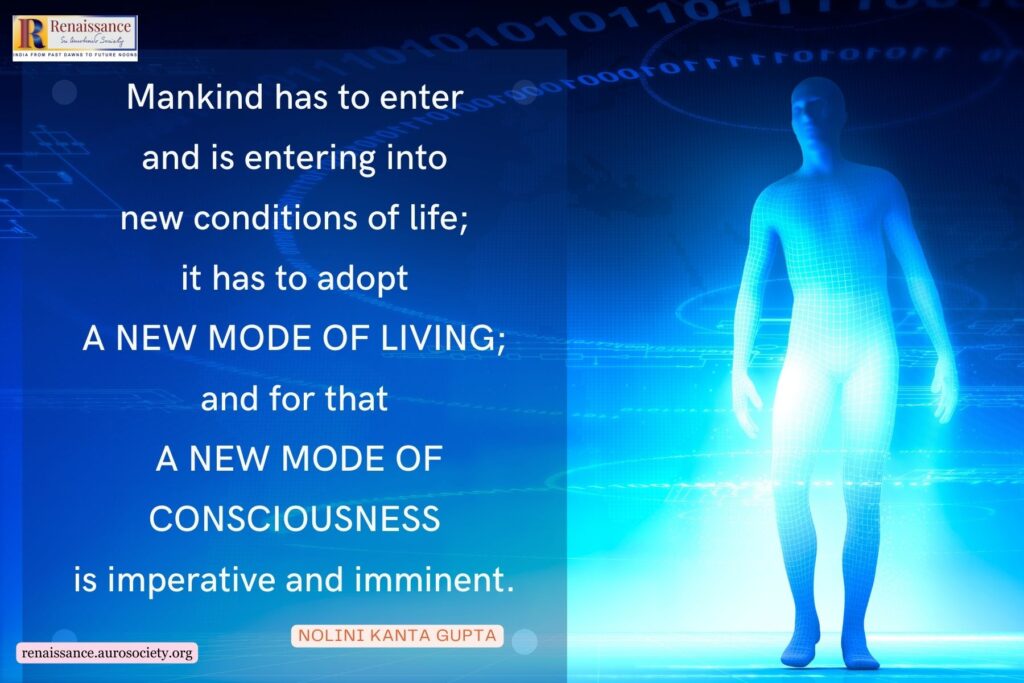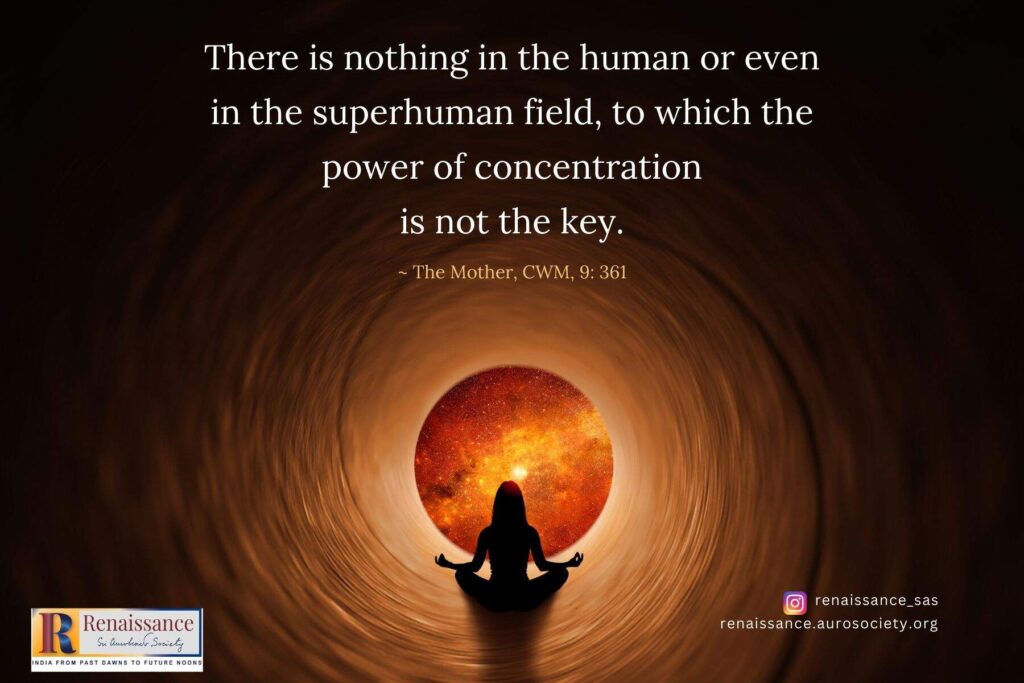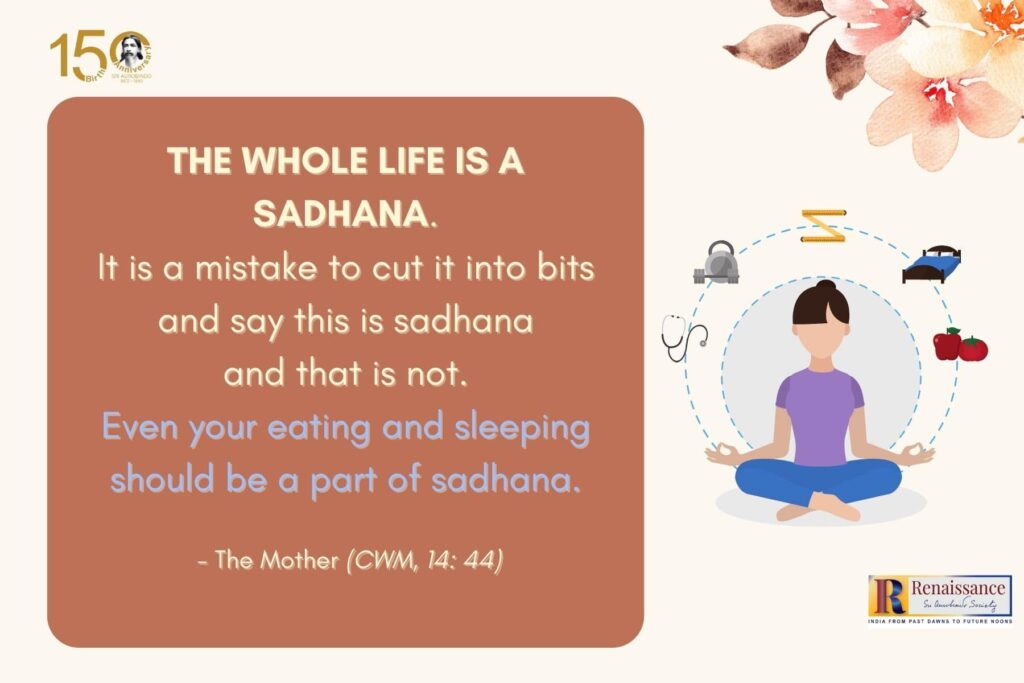It is not by repeating mea culpa ad infinitum that one can show one’s true humility. In owning too much and too often one’s sins, one may be just on the wrong side of virtue. There lurks a strain of vanity in self-maceration: the sinner in an overdose of self-pity almost feels himself saintly. Certainly, one must stand before oneself face to face, not hide or minimise or explain away one’s errors and lapses, all one’s omissions and commissions. But one need not brood over them, merely repenting and repining. One sees steadily, without flinching, what one actually is and then resolutely and sincerely takes to the ways and means of changing it, becoming what one has to be.
A fall, the discovery of a new frailty should be an occasion not to chastise and punish yourself, thus to depress yourself and harden your nature, but to enthuse you with a fresh resolution, to rekindle your aspiration so that you may take another step forward. And, naturally, this you must do not with the sense that you can succeed or move forward by any inherent capacity of yours—your failures are there always as standing eye-openers to you. No, it is not your self but the Divine Self that will come to your succour and lift you up. . . . That is the humility to be learnt.
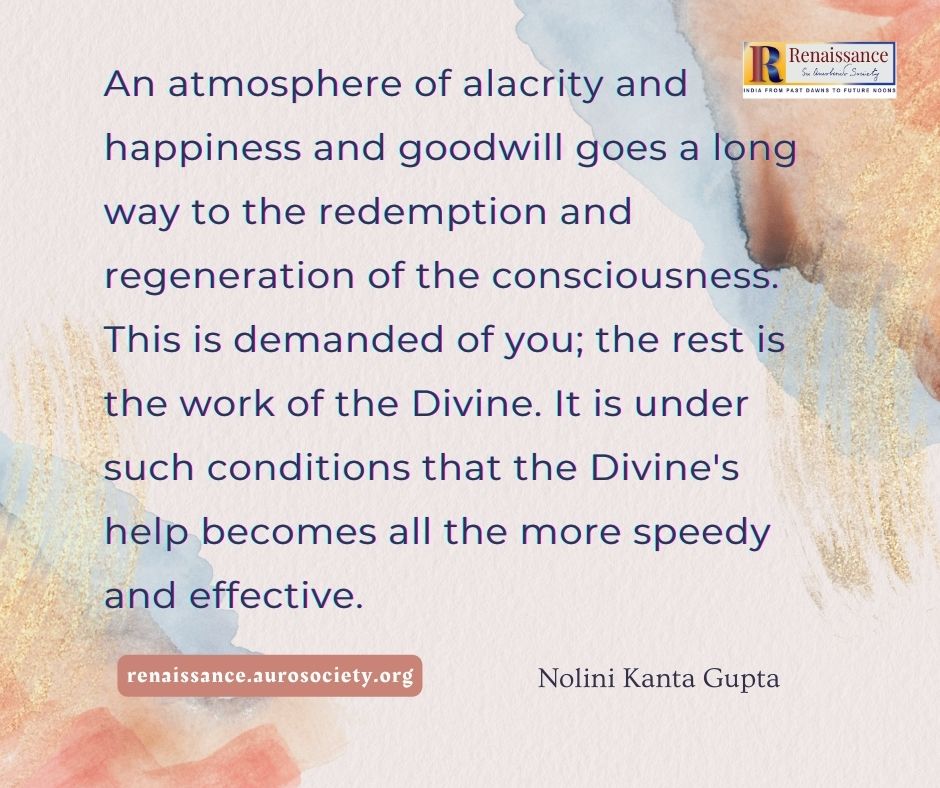
But it does not mean that you are to remain merely passive, inert — you cannot but be that if you are only a “weeping willow”— a dead-weight upon the force of Grace that would carry you up. Rather you should throw your weight, whatever it is, on the side of the Divine. An atmosphere of alacrity and happiness and goodwill goes a long way to the redemption and regeneration of the consciousness. This is demanded of you; the rest is the work of the Divine. It is under such conditions that the Divine’s help becomes all the more speedy and effective. Otherwise, mere contrition and lamentation and self-torture mean, as I have said, a ballast, a burden upon the force of progress and purification; as Sri Krishna says in the Gita, by oppressing oneself one oppresses only the Divine within.
Humility, in order to be true and sincere, need not be sour and dour in appearance or go about in sack-cloth and ashes. On the contrary, it can be smiling and buoyant: and it is so, because it is at ease, knowing that things will be done—some things naturally will be undone too—quietly, quickly, if necessary, and inevitably, provided the right consciousness, the right will within is maintained.
The humble consciousness does not, of course, take credit for what is being done for it, nor does it concentrate wholly or chiefly on its utter futility and smallness. It feels small or helpless not in the sense as when one one feels weak and miserable and almost undone, but as a child feels, naturally and innocently, in the lap of it mother: only I perhaps it is more awake and self-conscious than the child mentality.
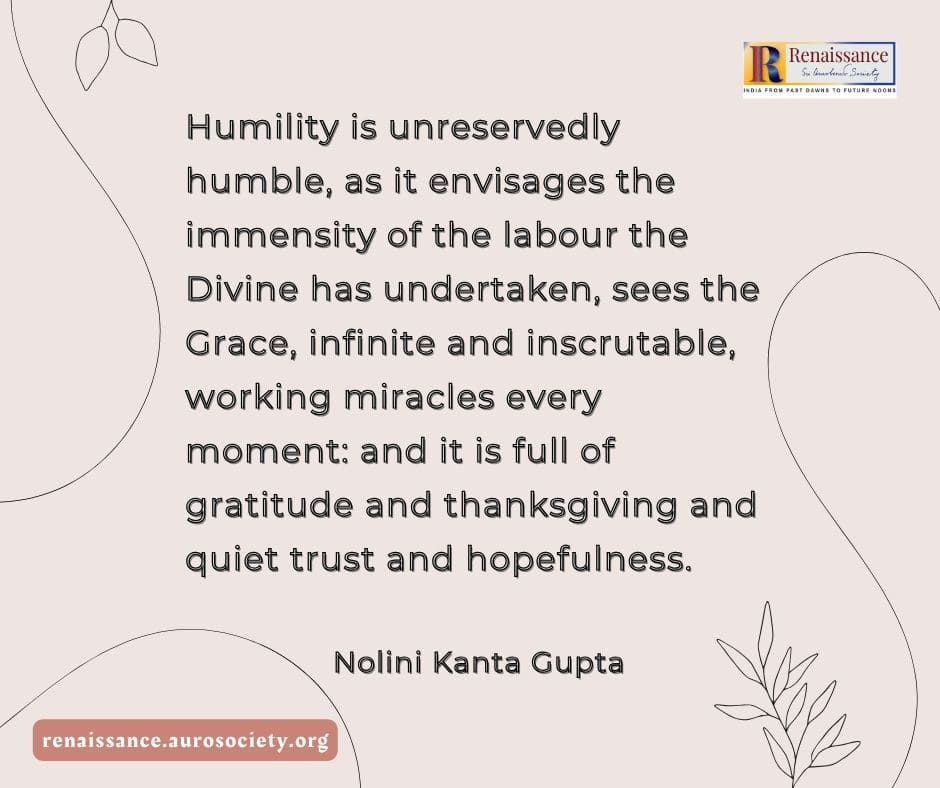
Humility is unreservedly humble, as it envisages the immensity of the labour the Divine has undertaken, sees the Grace, infinite and inscrutable, working miracles every moment: and it is full of gratitude and thanksgiving and quiet trust and hopefulness. Certainly, it means self-forgetfulness and selflessness, as it cannot co-exist with the sense of personal worth and merit, with any appreciation of one’s own tapasya and achievement, even as it thrives ill upon self-abasement and self-denigration, for if one is rajasic, the other is tamasic egoism—egoism, in any case.
Absolute nullity of the egoistic self is the condition needed, but anything less than that, any lowering of the consciousness beyond this zero point means reaffirming the ego in a wrong direction. True humility has an unostentatious quietness, as it has a living and secret contact with the divine consciousness.
(Collected Works of Nolini Kanta Gupta, Vol. 3, pp. 104-105)

~ Design: Beloo Mehra

